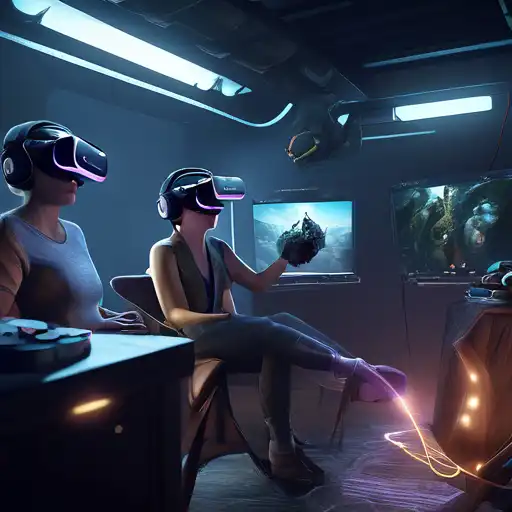Introduction to Virtual Reality
Virtual Reality (VR) has transformed the way we interact with digital content, offering immersive experiences that were once the stuff of science fiction. This guide will walk you through the essentials of creating engaging VR experiences that captivate and amaze your audience.
Understanding VR Technology
Before diving into VR development, it's crucial to understand the technology behind it. VR relies on headsets and motion tracking to create a sense of presence in a virtual environment. Key components include display resolution, field of view, and refresh rate, all of which contribute to the immersion.
Designing for VR
Designing for VR is fundamentally different from traditional media. It requires a deep consideration of user interaction, spatial audio, and environmental design. Here are some key principles:
- Focus on user comfort to prevent motion sickness.
- Design intuitive interactions that feel natural in a 3D space.
- Use spatial audio to enhance the sense of presence.
Developing VR Content
Developing VR content involves a combination of programming, 3D modeling, and sound design. Popular platforms like Unity and Unreal Engine offer robust tools for VR development. Here’s a basic workflow:
- Conceptualize your VR experience.
- Create or source 3D assets.
- Program interactions and mechanics.
- Test extensively to ensure comfort and immersion.
Optimizing for Performance
VR applications demand high performance to maintain immersion. Optimizing your VR experience involves reducing latency, improving frame rates, and minimizing motion blur. Techniques include:
- Optimizing 3D models to reduce polygon count.
- Using efficient lighting and shading techniques.
- Implementing occlusion culling to hide non-visible objects.
Publishing and Distribution
Once your VR experience is ready, choosing the right platform for distribution is key. Options include app stores like Oculus Store and SteamVR, or web-based platforms for browser-based VR experiences. Consider your target audience and the devices they use when selecting a distribution channel.
Future of VR
The future of VR is bright, with advancements in haptic feedback, eye-tracking, and wireless technology pushing the boundaries of what's possible. Staying ahead of these trends will ensure your VR experiences remain relevant and engaging.
Creating immersive VR experiences is a challenging yet rewarding endeavor. By following this guide, you’ll be well on your way to crafting virtual worlds that enchant and engage users like never before.
